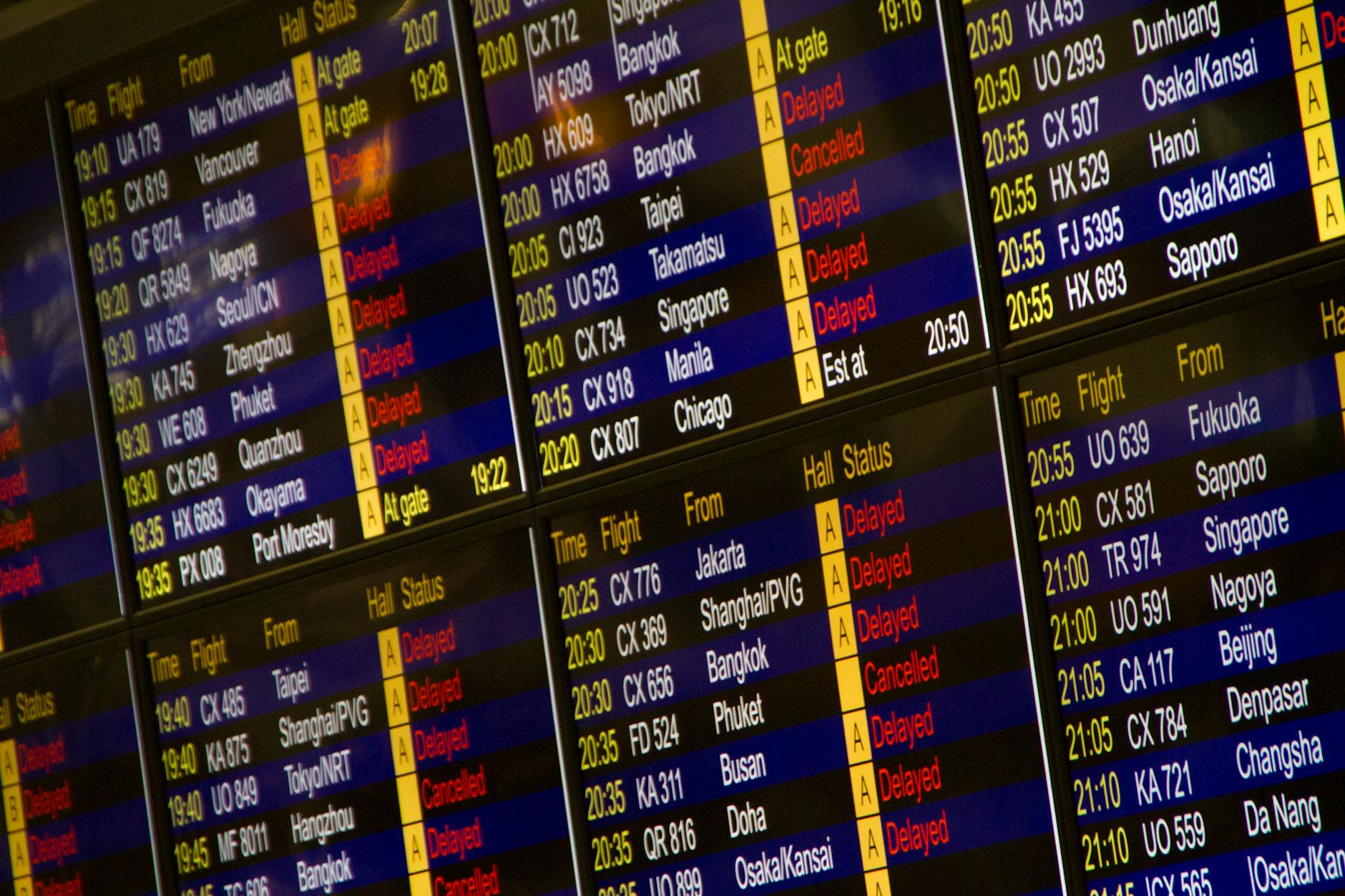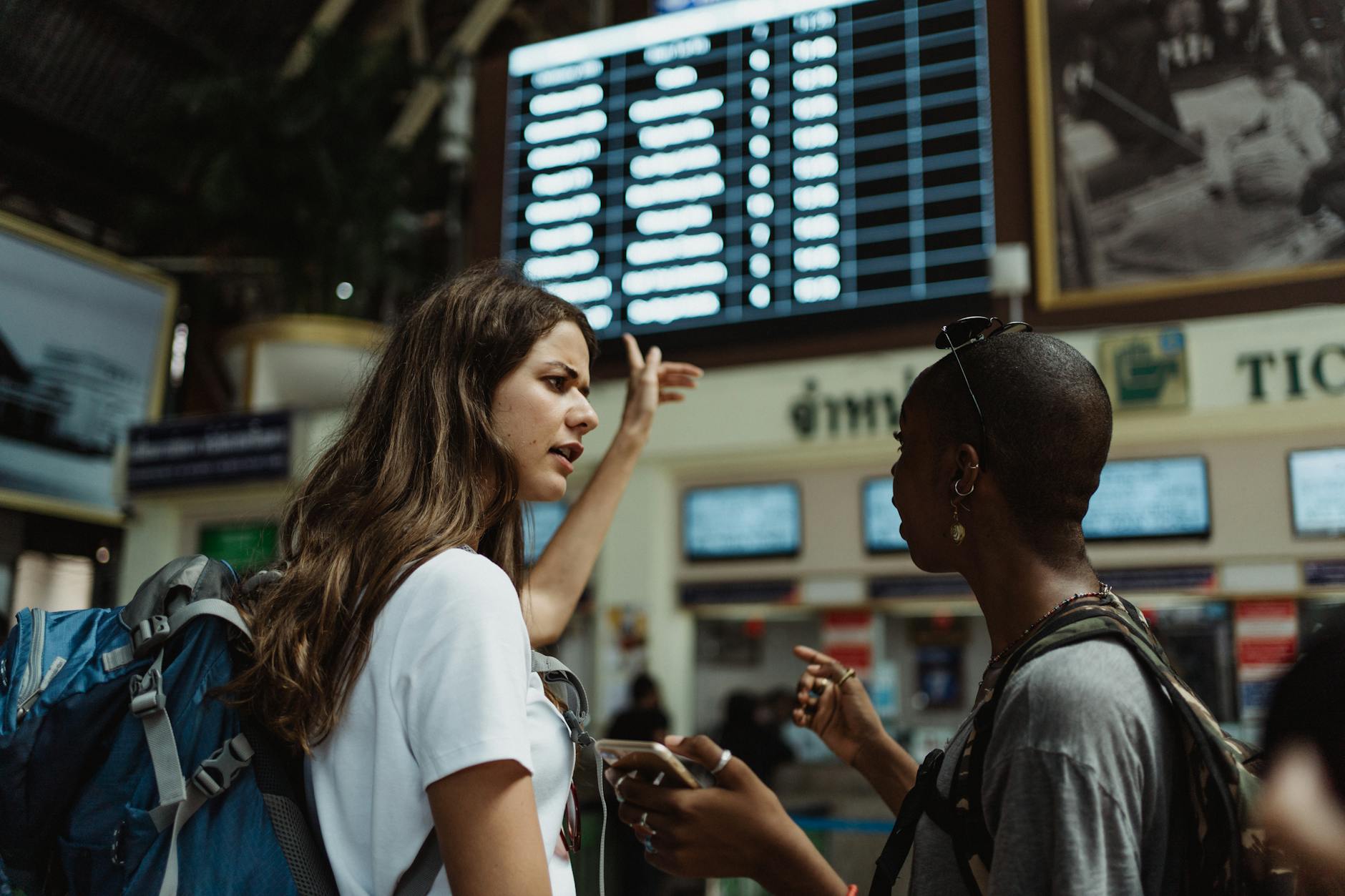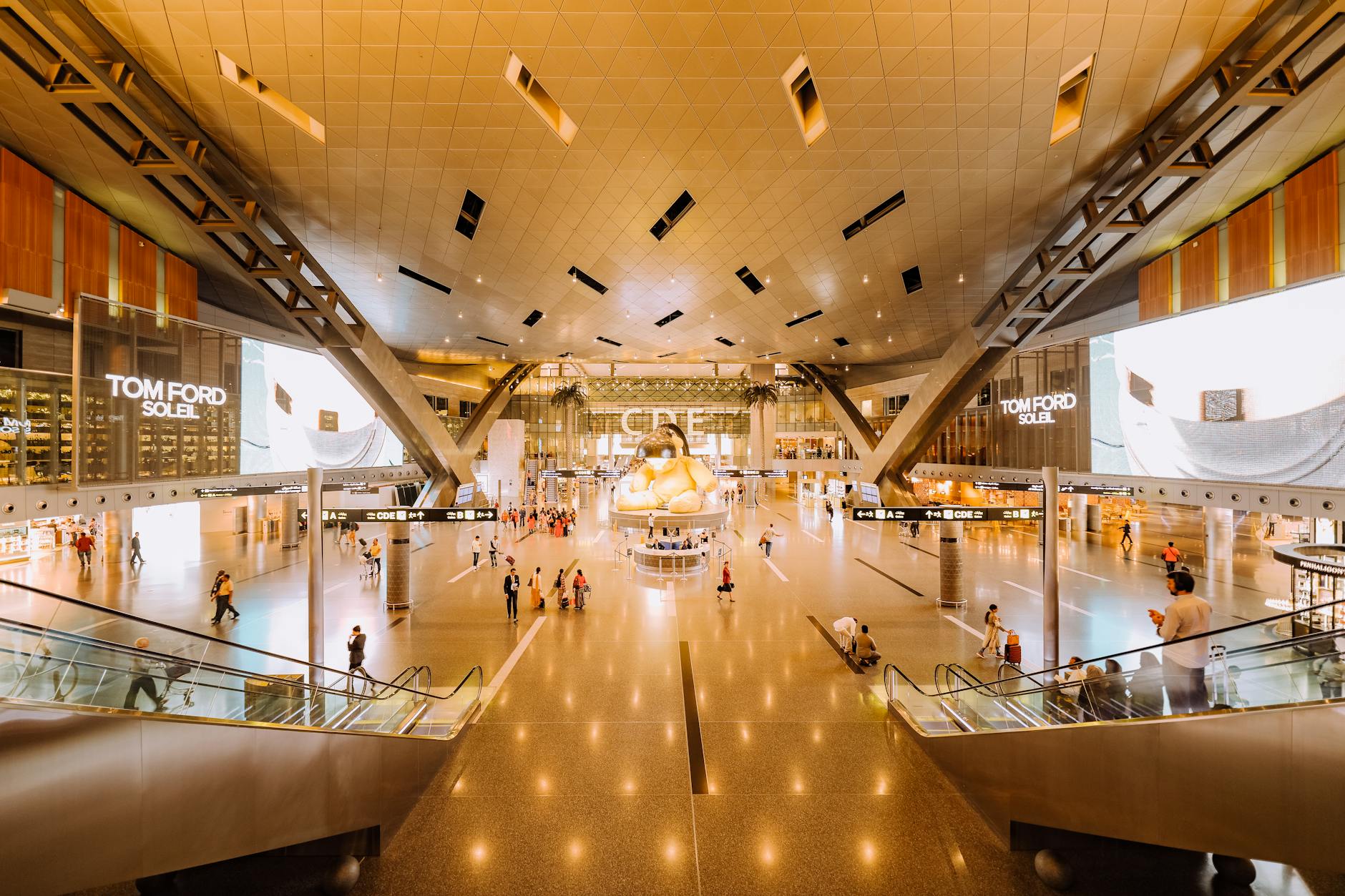How Early Should You Arrive at the Airport? Best Tips for Stress-Free Travel [2025 Guide]
Finding the right answer to how early you should arrive at the airport can feel stressful, whether you’re traveling for the first time or flying often. No one wants the anxiety of rushing through security or waiting endlessly at the gate. The truth is, your timing at the airport can make or break your entire travel experience.
Minks Cruise and Travel has helped countless travelers perfect their routines so every trip starts off right. Relying on both expert advice and first-hand experience, we’ve put together tips to help you plan your airport arrival for every type of trip. In this guide, you’ll learn practical advice you can trust, and if you’re searching for unforgettable travel experiences or deals, you’ll find fresh options by browsing MinksTravel.
Factors That Determine How Early You Should Arrive at the Airport
Knowing how early you should arrive at the airport isn’t just about following general advice; several moving parts shape the best time for you to show up before your flight. From your flight type to who’s with you, every detail matters. Understanding these factors helps guarantee a smooth start to your journey, whether you’re after a quick domestic flight or headed overseas to make lifelong memories. You’ll also find that searching MinksTravel can uncover deals and support for every type of trip.
Domestic vs. International Flights

Photo by LT Chan
The difference between domestic and international flights often determines if you should be putting your shoes back on at security or already relaxing by your gate. Airlines recommend arriving:
- 1.5–2 hours early for domestic flights
- 3 hours early for international flights
Why does international travel demand so much extra time? You’ll need it for:
- Checking passports and visas at check-in
- Clearing customs and immigration lines
- Increased security and extra paperwork
International flights also board earlier, and missing check-in cutoffs is easier than you think. A recent post by Travel + Leisure explains how long international check-ins and security can really take, with real-world stories to help you plan smarter. Find more details at International flight arrival time advice.
Airline and Airport Policies
Rules aren’t the same at every airport. Big-city hubs and regional airports run different shows, and each airline has its own cutoffs and requirements.
Keep in mind:
- Major airports can have long walks or waits, especially if switching terminals.
- Regional airports may offer quicker check-ins, but sometimes close counters earlier.
- Some airlines close check-in 30–45 minutes before domestic flights and 60 minutes before international flights.
For the most reliable information, visit your airline’s official site. For example, Delta’s domestic check-in requirements and American Airlines’ check-in windows show how much these rules can differ. Always check your ticket and airport maps before heading out.
Travel Season and Time of Day
Timing your arrival right gets trickier during the busy months or on weekends. If you’re flying:
- Around major holidays or school breaks
- On Fridays, Sundays, or Monday mornings
- During peak daytime hours
expect longer security and check-in lines, plus crowded parking garages.
On the flip side, early-morning or late-night flights often mean fewer crowds and speedier checkpoints. High season impacts not just flight costs but convenience and airport rhythms. For more about how seasons affect travel, see what to expect during peak travel times.
Tip: Arrive even earlier if you’re traveling during peak season, as lines can easily double. For off-peak flights, you might shave off 15–30 minutes—just don’t cut it too close.
Traveling Solo, with Family, or as a Group
Who you’re traveling with changes how long it’ll take to move through the airport. If you’re flying alone and experienced, you might zip through security with only a small carry-on. But if you’re traveling in a group, wrangling kids, or managing lots of bags, you’ll need extra time.
Common scenarios that add minutes (or even hours):
- Traveling with young children or infants
- Coordinating large groups or multiple families
- Needing extra assistance or medical accommodations
- Checking oversized luggage or special items (like strollers or sports gear)
If you’re planning group travel or a family vacation, check out the useful guide on organizing group and family trips. These tips are designed to help you avoid late check-ins and ease your airport routine.
No matter your style, always factor in the needs of your party when answering the question: How early should you arrive at the airport? Thoughtful planning up front sets you up for smoother adventures.
Recommended Airport Arrival Times: Best Practices
Arriving at the right time makes all the difference in setting a calm, confident mood for the rest of your journey. Still asking yourself, how early should you arrive at the airport? The details below make it easy: let’s break down best practices by flight type, ways to speed up every step, and how to handle lateness with a cool head.
Suggested Timelines for Domestic and International Flights

Photo by Ketut Subiyanto
No one wants to be the person sprinting through terminal corridors or eyeing the departure board in panic. Sticking to well-tested arrival windows gives you breathing room and reduces stress.
Domestic Flight Arrival: What Works
For U.S. domestic flights, most experts and airlines agree on a reliable two-hour rule. According to Delta’s check-in times at U.S. airports, plan to arrive at least 2 hours before departure. This gives you time for:
- Checking in
- Dropping checked baggage
- Clearing security screening
- Finding your gate and grabbing a snack
American Airlines check-in and arrival information also reinforces the two-hour minimum. This applies for even short hops—even if you’re usually fast, lines and holdups happen.
International Flight Arrival: Why Three Hours is Standard
If you’re heading out of the country, go a step further. Airlines like Delta say to arrive 3 hours before your international flight (Delta’s International Check-In Requirements). Extra steps—passport checks, customs forms, and security interviews—add time you can’t always plan for.
United’s guide to airport process and gate timing reminds travelers to be at their gate 30 minutes before boarding because some international flights close doors even earlier.
At major airports in Europe or Asia, even more time might be smart, especially during high season or if you’re unfamiliar with local procedures.
Maximizing Efficiency: Online Check-In and Baggage Tips
Airport routines are getting faster for prepared travelers. Here’s how to make the most of your time and minimize airport drama:
- Use Online Check-In:
Most major airlines allow online check-in up to 24 hours before your flight (American’s online check-in details). You can score a better seat, skip the main counter, and go straight to security with your mobile boarding pass. - Go Light with Carry-On:
Traveling with only carry-on bags means you skip both airport queueing and baggage claim delays. Double-check your airline’s carry-on size limits to avoid surprises at the gate. - Check Bags Smartly:
If you must check luggage, tag your bags at home (if your airport supports it) and use self-service kiosks for quicker drop-off. Early bag check often means less line waiting near flight time. - Prep Documents and Electronics:
Keep your ID, boarding pass, and required documents handy. Place electronics at the top of your bag so you move faster through security trays. - Know Your Airport:
Some airports are famous for quick lines. Others, especially large or international hubs, are known for congestion. You can find planning tips for both types in MinksTravel insights, or reference their local airport guides for smoother moves through every step.
Want more tips to cut wait times and skip lines? Check out helpful family and group travel airport tips to keep everyone moving, whether solo or with a crowd.
What to Do If You’re Running Late
Running behind schedule happens to the best of us—unexpected traffic, slow lines, or a forgotten item can eat up precious minutes. When time is tight:
- Tell an Airline Staffer ASAP:
Standing in a long airport line and worried you’ll miss your flight? Find an airline attendant or use their mobile app right away. Airlines sometimes bump late passengers to the front if possible. - Use Priority Security and Fast Lanes:
If you’re really in a crunch, see if your airport offers paid fast-track security lanes. Some credit cards, ticket classes, or memberships include access. - Go Direct to the Gate:
Skip food stops and duty-free shopping. Focus on reaching your gate so you don’t miss final boarding calls. - Prepare Your Documents and Boarding Pass in Advance:
Speed up every interaction by keeping what you need in your hand or easily accessible. - Call the Airline if You’re Stuck:
If it’s almost time for departure and you’re still a way out, call the airline to alert them. They may offer solutions or move you to a later flight if you just can’t make it.
Some airports post real-time wait times and alerts on their website or app—scan those before you go to update your plan on the fly.
Missing flights isn’t fun, but quick thinking, open communication, and smart use of airport tools can save your travel day. Stay calm and remember, there’s always another way to keep your journey on track.
For more assistance planning your next airport strategy or upgrading your pre-travel routine, you can always reach out to Minks Cruise and Travel for one-on-one planning help. Searching MinksTravel can also unlock travel experience deals that make your next trip smoother from the first step.
Expert Travel Tips to Ensure a Smooth Airport Experience
A little preparation goes a long way when you’re figuring out how early should you arrive at the airport. Simple habits like getting your documents ready, streamlining your packing, and knowing how to relax once you reach the terminal are all key steps. Below you’ll find practical, real-world tips to help you move confidently from your front door to your airplane seat.
Documents, Preparation, and Packing
 Photo by Zak Chapman
Photo by Zak Chapman
The last thing you want when you arrive at the airport is to be digging for paperwork at the bottom of your bag. Smart travelers keep things simple and organized before even leaving home.
Key Documents to Prepare:
- Passport or valid government ID (make sure they aren’t expired)
- Boarding pass (digital or paper)
- Travel visas or health certificates (if required)
- Proof of travel insurance or vaccination (for some destinations)
- Itinerary, hotel, and transport confirmations
Create a central pocket in your backpack or carry-on for these. If you’re traveling with others, check that each person has their own set ready to go. Scanning copies to your phone adds an extra layer of backup if something goes missing.
Packing Tips for Speed and Security:
- Place electronics (laptops, tablets) and large liquids where they’re easy to pull out.
- Use packing cubes to keep clothes and toiletries sorted.
- Remember the TSA’s 3-1-1 rule for liquids in carry-ons: 3.4 ounces per container, in a 1-quart zip bag, 1 bag per person.
- Double-check airline luggage weight limits to avoid last-minute repacking at check-in.
If you want a step-by-step checklist to make sure nothing gets left behind, try using a helpful trip planning guide from MinksTravel. It covers not only what to pack, but how to prep for every step from booking to boarding.
Stress-Reduction and Airport Comfort Tips
Airports can be noisy, crowded, and unpredictable. The good news is, your time there doesn’t have to be miserable. You can set yourself up for a calm, comfortable experience—even during delays or long layovers.
Quick Comfort Fixes:
- Wear loose, breathable clothes and supportive shoes, perfect for standing or walking long distances.
- Pack a refillable water bottle. Many terminals have water stations, so you stay hydrated without buying pricey drinks.
- Bring a neck pillow, eye mask, and headphones for rest or to escape the noise.
Easy Entertainment and Relaxation Hacks:
- Download shows, audiobooks, playlists, or games onto your devices before your trip.
- Carry snacks like nuts, dried fruit, or granola bars, so you’re not stuck with only airport fast food.
- Try portable comfort items—a book or even a lightweight high-back camping chair with head support offers a sturdy way to rest when seats are limited.
For more comfort ideas, check out these practical airport survival tips and see why experts agree timing, clothing, and snacks can change your entire airport mood.
Frequent travelers also recommend building a little buffer time wherever possible. Arriving early not only takes the stress off rushing, but gives freedom to enjoy airport lounges, browse shops, or simply people-watch with coffee in hand. Searching MinksTravel for travel experience deals can reveal perks, passes, and extras that upgrade your time at the airport, making the wait part of the adventure—not just filler before your flight.
Conclusion
Arriving early at the airport helps your trip start smoothly and calmly. Give yourself extra time for check-in, security, and any delays, so you’re not rushed. Simple prep makes travel easier, whether your flight is domestic or international.
Use these tips to stay comfortable and relaxed from the start. If you want personalized help, Minks Cruise and Travel can make planning easier.
For more travel deals and advice, check out MinksTravel. Share your best airport timing tips in the comments to help others travel smarter.







